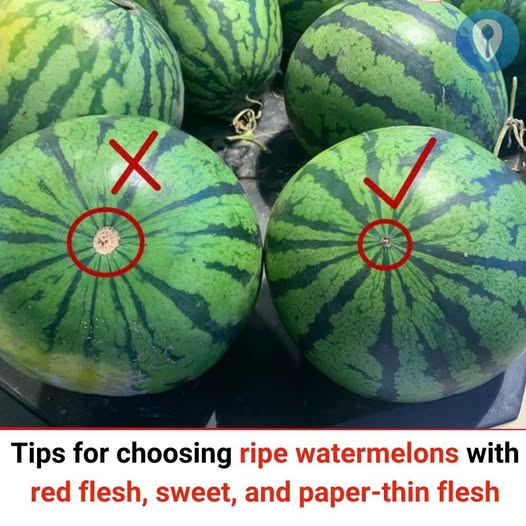Tips for Choosing the Perfect Watermelon
How to Spot a Ripe Watermelon Every Time
There’s nothing quite like the crisp, refreshing taste of a perfectly ripe watermelon on a hot summer day. But selecting one from the pile can feel like a gamble—will it be sweet and vibrant, or bland and mealy? Fear not! With these six expert-backed tips, you’ll learn to identify a ripe watermelon by its red flesh, natural sweetness, and thin rind . Say goodbye to guessing games and hello to juicy, flavorful results!
1. Hunt for the “Field Spot” (Your Melon’s Sweetness Signal)
The field spot —also known as the “sugar spot”—is the creamy yellow patch where the watermelon rested on the ground. This spot should never be white or green.
- Why it works: A green or white spot suggests the melon was picked too early, before sugars fully developed. A rich, buttery yellow field spot means it ripened on the vine, soaking up the sun’s warmth for maximum sweetness.
- Pro tip: Avoid melons with overly large or discolored field spots. They may have been left on the ground too long, leading to overripeness or bruising.
2. Inspect the Rind’s Color and Contrast
A ripe watermelon should have a deep, even color with bold stripes or mottled patterns (depending on variety). For most types, the base color should be a dark green, while the stripes or markings should stand out clearly.
- What to avoid: Pale, washed-out hues or inconsistent mottling. These often signal under-ripening or uneven sun exposure during growth.
- Bonus: Some heirloom varieties (like yellow-fleshed watermelons) have lighter rinds, so research your specific type before dismissing a lighter green melon.
3. Lift It—Heft Matters!
A ripe watermelon should feel surprisingly heavy for its size .
- Why it works: Watermelon is 90% water. A lightweight melon means it’s dehydrated, possibly overripe or lacking juice.
- Pro tip: Compare two similarly sized melons. The heavier one will almost always be sweeter and crisper.
4. Tap the Rind for a Hollow Sound
CONTINUE READING ON THE NEXT PAGE

